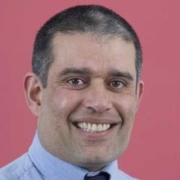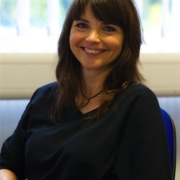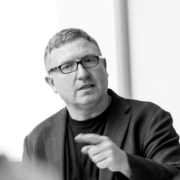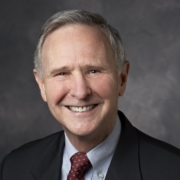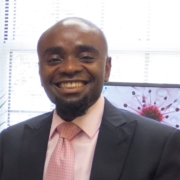Luis Urrieta & Judith Landeros
Counterstories of Fundamental Education in Central Mexico
Today we look at a UNESCO development project started in the early 1950s in Central Mexico that promoted fundamental education. My guests, Luis Urrieta and Judith Landeros, critique the common narrative of the project, revealing problematic deficit perspectives as well as nuanced counterstories of silenced voices.
Luis Urrieta, Jr. is an Indigenous (P’urhépecha)/Latino interdisciplinary researcher. He currently holds the Charles H. Spence, Sr. Centennial Professorship in Education at the University of Texas at Austin where Judith Landeros is a doctoral student in the Cultural Studies in Education program with a certificate in Native American and Indigenous studies. Their new article is featured in the August issue of the Comparative Education Review.
Citation: Urrieta, Luis, Landeros, Judith interview with Will Brehm, FreshEd, 306, podcast audio, December 19, 2022.https://freshedpodcast.com/urrieta-landeros/
Will Brehm 0:00
Luis Urrieta and Judith Landeros, welcome to FreshEd.
Judith Landeros 2:40
Hello. Thank you for having us.
Luis Urrieta 2:42
Hi, Will. Thank you for inviting us.
Will Brehm 2:44
Congratulations on your co-written article. It’s really fantastic. I’ve been so lucky to be able to interview multiple people in this special volume. And you two have done this really great look at the history of a particular center in Mexico. So, for listeners who probably haven’t read this article, can you explain what the Regional Center of Fundamental Education for Latin America was and in particular, the center that was in Mexico that you looked at?
Luis Urrieta 3:13
Sure. The CREFAL, the Centro Regional de Education Fundamental para America Latina, or the regional center for fundamental education in Latin America, was created in 1950. It came out of UNESCO, the United Nations Educational, Scientific and Cultural Organization as a regional center that would provide programs to alphabetize communities. So, literacy programs, to fight disease, to improve the use of technology in communities and to elevate the socioeconomic levels of different regional, mostly rural communities throughout the world. And Mexico solicited the center in 1950 and it was granted to Mexico, and it started in May of 1951 in Patzcuaro, Michoacan.
Will Brehm 4:04
Okay. So, UNESCO is sort of creating these centers. The Mexican government applies for one of the centers to be built. Who else was involved in these centers? So, the literacy program or the disease prevention program – who were the actors involved that actually sort of enacted some of these programs?
Judith Landeros 4:25
So, there were many actors, or many people, involved in the program from more of an administrative perspective, right. From like a recruitment perspective of bringing in potential teachers and educators, assessment folks who would do site visits, researchers from universities, particularly in the US, and those who oversaw the program in itself, and those who developed the curriculum. So, there were many actors and different moving pieces based on the archives that we’ve looked at, as well as you know, the history of how they tell their own story.
Will Brehm 5:03
It’s quite interesting. I mean, the idea that you went back and actually looked at all these documents. Where were these documents? What archives exist that house documents from the 1950s?
Luis Urrieta 5:14
The CREFAL has a fairly extensive archive. They kept meticulous notes. A lot of them were handwritten. They have an extensive iconographic archive with photographs, a lot of them undated, and without locations. So, it’s fairly unorganized. I happened to stumble upon it during my fieldwork in the community of San Miguel Nocutzepo, which is the focal community in this article. During the Fulbright year that I was there between 2009 and 2010, I heard a lot about the CREFAL from community members and so I went into the actual center to the library, and I met some of the folks there. In particular, Sandra Piñón Guía, who then allowed me access to the archive and was very helpful in finding for me a lot of the archive materials related to the community of San Miguel Nocutzepo. But even looking through the iconographic images, a lot of them are numbered. But again, the contextualization of a lot of the archive is not there. So, a lot of it was piecing together the information that I had just on our own, and later with Judith’s very important help in this project as well.
Will Brehm 6:32
I mean, what a find! To come across this archive, I mean, frustrating because it’s sort of unprocessed, let’s say, and there’s a lot of gaps. But I mean, just an amazing sort of find in a way. So, obviously, the center itself as a physical entity still exists and the library, and so perhaps there still sort of a geographic imprint on this particular community. How long did the project actually run for?
Judith Landeros 6:57
Well, there were different phases. That’s something to mention. That there were different phases of the program. Because this was an experimental program. It’s even quoted like that in some articles that have written about it. With the different phases there were different goals. So, that’s something that is important to mention. And as far as the years, I think Dr. Urrieta can say more about that, but definitely, right now, it’s the last phase of its current state. But when it started, it was with the idea of implementing fundamental education with these different areas. And then it started just focusing more on like literacy, and adult literacy.
Will Brehm 7:44
So, the center itself, CREFAL, is still ongoing to this day?
Luis Urrieta 7:49
Yes. So, it’s a physical entity. It has a campus that was granted to the entity by former Mexican President Lazaro Cardenas. It was one of his sort of like a plantation home called La Quinta Erendira. And in the campus grounds is the library and the archive. It also has a lot of classroom space because after the 1990s, it was declared an autonomous institution that receives government funding and other types of funding. They host degree programs, certification programs, and also regional conferences. For example, in 2010, when I was there, they hosted the Latin American Regional Conference on Intercultural and Multilingual Education that brought in educators from throughout the Americas.
Will Brehm 8:36
Amazing! I mean, over 70 years, it’s still going on. Is UNESCO still involved?
Luis Urrieta 8:41
Less directly than it originally was, but it’s definitely connected to that history, to that entity, and it prides itself in being one of its institutions that was created from it.
Will Brehm 8:54
It started, you said, in the early 1950s -1951, exactly. Was this connected to sort of Cold War movements happening in the world at that time?
Luis Urrieta 9:06
It was definitely connected to movements, right. UNESCO was created in 1945, right after World War Two in the UK, by the UK, and the US, and China, and other countries that were part of the Western Allies. It was created to promote world peace, promote education programs, to promote cultural programs, international communication, a lot of it was geared toward countries that were considered to be underdeveloped and were at risk of becoming more influenced by the Soviet Union and the Soviet bloc. And so, it was a way of promoting Western capitalist ideals and safeguarding particular regions of the world that were potentially vulnerable to communist and socialist influence.
Will Brehm 9:57
It’s quite interesting and I guess Mexico -at least from the US’ point of view was sort of an area close to home that needed to secure its borders in a way from that quote unquote, communist threat. It’s an interesting history and I’m sure there’s other examples where UNESCO was involved in similar sorts of projects. Before we really dig into the project itself, I guess we have to sort of think through what this notion of fundamental education is. To be honest, I don’t think I’ve ever come across that before. What is fundamental education, at least as defined by UNESCO back in the 1950s?
Judith Landeros 10:33
So, educacion fundamental or fundamental education is what the CREFAL called the type of education program that they were going to implement, which focused on different areas of health, rural economy, familial structures, recreation, and basic knowledge, which is basic literacy. And those were all the different components of fundamental education, with the purposes, again, to promote the development of the individual, the socio-economic development of communities, because communities were seen that there was like, some kind of problem. That there were all these issues going on, and they needed to be fixed. And fundamental education is grounded from this perspective of objective understandings of learning, or what success is. And also, that people’s lives would improve once they have something that they don’t have because they’re seen as missing these aspects in their life. That’s what we know brought in deficit thinking about the communities that they were approaching with fundamental education.
Will Brehm 11:42
So, fundamental education was going to fill the gaps that this community didn’t have. It was providing something that was in deficit. The assumed gaps that UNESCO and whoever the partners were assumed to exist.
Luis Urrieta 11:57
And if I may add, Mexico also had a vested interest in creating this center because it was still trying to promote its post-revolutionary sort of nationalist programs. You know, when we think of Mexico, we think a lot of times from a foreign perspective, we think of it as a very homogenous country, right? But it really has a lot of regional diversity in terms of indigenous communities and indigenous cultures. And after the Mexican Revolution, part of what the government set out to do was to really foment a national citizenry around a particular image of who the Mexican citizen was -the ideal Mexican citizen. And so, for a lot of indigenous communities, they were targeted with education programs like fundamental education that would incorporate them into this national citizenry by assimilation through the promotion of literacy programs that focused on literacy in Spanish, and by promoting the types of activities that would also create or contribute to this national imagery.
Will Brehm 13:04
Really fascinating! And so, in that sense, was it successful? From the logic of the project itself, from fundamental education, was it successful, at least from CREFAL’s point of view?
Judith Landeros 13:18
I mean, from CREFAL’s point of view, following the scientific method and just having these pre-assessments and then having post-assessments, and then seeing the improvements in the community and the changes, yes, there is success because now they have access, or things were brought in that they didn’t have, or didn’t know about, or were not aware about. So, there is that idea of success, and that it contributed to the development of the community. And some of it includes bringing in synthetic fertilizers in order to make sure that they grow more crops and have more productions, and they can sell more, or bringing in certain animals again, for economic reasons. And obviously, there are ways that it was successful, that it continues to help. But just the approach of it, too, I think is something to be critical about and question, as well as different fishing techniques, right? And how Western, I guess, or introduced technologies didn’t come in with the idea of how to integrate the technologies that exist in the community with those that are brought. It was more so like, “We’re bringing you something because you don’t have technologies. You don’t have anything”. And with that perspective, you’re contributing to assimilation. It’s this idea that you’re civilizing, and it doesn’t highlight the culture, the traditions, the technologies, like the intellectual knowledge that exists in those communities.
Will Brehm 14:47
Yeah. I think that’s such a fascinating insight, how it sort of was this civilizing mission in a way to use that term. I keep sitting here imagining people in UNESCO sitting around the table looking at the reports and sort of saying, “Oh, look how great this project is, we’ve ticked this box, the number of students in school and the synthetic fertilizer. I can imagine people doing that because, I mean, I think it still sort of happens to this day. But yet, you’re sort of bringing up that there was actually a level of, in a way, violence with what was actually going on in some of these communities that has a particular history and isn’t reflected. That history isn’t being reflected, potentially, in some of the sort of official history that we might know about. And so, this brings me to something that you do in this article, where you bring up these counter stories. Based on this archive that you uncovered and started exploring, and the people you knew and met in the community, you started getting stories and counter stories that sort of explained and showed other sides that might have been missed in this sort of official history that people in UNESCO are sitting around talking about. So, what were some of these stories that you uncovered? And what were the different perspectives that you found to this sort of assimilation process through this regional center?
Luis Urrieta 16:10
I think one of the most important things was that the general common-sense history of the CREFAL is that they were pretty much welcomed in the communities. And that people were sort of enthusiastic and excited about what the CREFAL was bringing. And, you know, some of the elders in the community that I spoke to shared that there was actually some resistance and apprehension to allowing the CREFAL -we call them core members. But the people who participated in this organization to enter the communities, a lot of the communities were very protective of letting outsiders in, of sharing their traditional knowledge fully, and of allowing projects to just be created for which it wasn’t fully understood what the benefits of those projects would be. So, for example, there’s an elder Don Luis Rodriguez, in the piece that we referenced, who shared that the CREFAL wanted to build a road up on top of one of the hills behind the community, as a tourist site for people to visit and see the landscape, and appreciate the landscape from the hilltop but the community resisted that and opposed it and never allowed that road to be constructed on the grounds that it would bring people from the outside in to visit and it might have generated some tourist monies, but it would also generate trash, it would also generate people from other places coming into the community and making it more open in ways that the community was not fully comfortable with.
Will Brehm 17:52
You also tell the story about this woman named Doña Albina and her sort of recollections of the synthetic fertilizer. Can you tell that story?
Judith Landeros 18:06
Yeah. I want to explain a little bit before we go into the Doña Albina? story because Doña Albina, and the other women that we mentioned in the article, their names were written about their families. And a thesis written by a student who was doing research about the CREFAL in Nocutzepo, Fernando Vasquez Rivera. And as we were looking at this, we saw that there was just like one line describing them, and that was it in this long thesis. And then as we were talking about all this research, I remember talking with Dr. Urrieta about this and he’s like, “Well, I talked to them. They got to share with me their stories”. And then we looked at those, and we saw this stark difference. So, just wanted to mention that.
Will Brehm 19:01
I mean, that’s such a fascinating insight about sort of historical silences and how something like a PhD dissertation can silence a lot of voices, but then you can sort of uncover them and you start saying, “Oh, my gosh, what would the historical narrative be if these other voices would have been included”? So, what did you find when you started looking at all these women, and their stories, and their family stories from their perspectives? What did you find?
Luis Urrieta 19:27
Well, I think from the thesis we would have gathered that they did mostly housework. That they made tortillas, that they cleaned the house, that they helped their husbands in the fields, that they engaged in embroidery and sold some of that to contribute to the family income. And that’s about it. What we learned from these women through the conversations that I was able to have with them was that they were very strong women. That they were very active in community organizing, that they were very opinionated about their views and what they stood up for, that they challenged people in the community as things were changing in ways that were not in harmony with the ways that the community had always lived. And that they also had a presence. That they commanded respect in the community in ways that, a lot of times when we think of Indigenous women, from an outsider perspective, people don’t really appreciate the roles and the strength and the types of ways in which Indigenous women are active in their communities in very significant ways. So, Doña Albina, to start off, shared with us that – there was a comment in one of the conversations that the land was not producing the way it used to. And she said, that’s because the land has been burned. And she commented that the land was burned because of the excessive use of synthetic fertilizers. So, going back into the archives and the history, we started looking into the role that CREFAL played, and other government programs played, in subsidizing synthetic fertilizer use and encouraging synthetic fertilizer use, including by initially providing it for free to local subsistence farmers to the point that the land cannot produce any more without synthetic fertilizers. So, her comment related to that was that the land had been burned through these programs and through the ways in which the community, in some ways, fell into the use of these fertilizers through these programs. Also, she fought against the privatization of the communal lands, and later to the sale of the once privatized communal lands, to the growing avocado agro export economy, mainly lead to outsiders who saw this as an opportunity to buy plots of land that was formerly communal land, and to grow avocado on it. And for a long time, for many years, avocado imports from Mexico were banned by the US. And those bans were lifted after NAFTA was passed, which led to the avocado boom in the area of Michoacan. And to the US exclusively buying certified avocados produce from Michoacan, up until very recently, which had these avocado growers pressuring local communities to sell more and more land to meet the growing demand for avocado consumption in the US. So, she was directly opposed to all of that. She often talked about how she never was in favor of her husband coming to work in the US, and that the quality of life for her in the community and her relationship to the land, and the community itself was much more valuable than any money that could be made through working in the US. She was an important voice in the work that that we did.
Will Brehm 23:06
I love that so much because what you’ve done with one interview from someone who has sort of been silenced in these official narratives, you used it as sort of a perspective to then analyze this archive, and sort of see something that you might have sort of missed without that perspective without her insight, and then used that to sort of put it in this larger political economy of development of educational projects. And I mean, it’s so complex, and you sort of unsettle some of the common assumptions that we might have about some of these development projects. But you also said earlier that some people remember it in a positive way. And I guess this sort of brings up this: now that you’ve studied it from many different angles, and here’s this program that had this deficit model sort of built in, it had this assimilation to the ideal Mexican citizen was wrapped up in cold war geopolitics, was an experiment in the most pejorative of senses. On the whole now that you’ve looked at this from so many different angles with voices that weren’t present previously, how do you manage that tension of both good and bad potentially coming out of such a big program that to this day is still going on?
Judith Landeros 24:28
To speak on some of the positive things, or the things that the community sees as the positive impact -part of your question. Having access to clean water, also access to other medical technologies, right, because not to say that what was in the community before CREFAL wasn’t a way for people to take care of themselves and heal themselves, but even having access to newer technologies or learning about it, that was another positive thing. They would have workshops and they would have videos and posters and theater. That was their approach of teaching. And for some of them, they liked the people. I think in our conversations with Dr. Urrieta, they remember this lady, this seniora, from this country and they genuinely connected with some people. That doesn’t mean that because they were not let’s think some were well-intended with good intentions but that doesn’t mean you’re actually not doing harm. So, there were positives in those terms.
Luis Urrieta 25:43
With any institution, with anything, I think we need to have nuance. We need to add complexity. Stories are not always clean, right? And without that complexity, without that nuance, I think we don’t get a full picture. The picture that we get from the CREFAL is that these communities, and these community members, were not exploiting their resources to the full potential. They were not fully making use of what they had. They could have had better living conditions if they only knew how to do this, or if they only knew how to do that. And I think that that’s not the full picture, right? I mean, the full picture of these communities, and the nuance that we’re trying to add is related to a lot of Indigenous communities have survived and thrived well despite centuries of colonialism. And then changing forms of colonialism with the nation building projects, and then changing forms of colonialism with international global programs like these – like fundamental education, which actually spread throughout the world – and later with neoliberal development programs. And for a lot of Indigenous communities, development equates to a form of colonialism even now. So, I think that complexified the story of the CREFAL and highlighting the survivance of communities like Nocutzepo despite these waves of colonial intrusion which is what Elizabeth Sumida Huaman highlights, and colonial debris also helps us understand the nuance and the complexity of these issues.
Will Brehm 27:32
Zooming out then, from that particular story, what does this tell us about comparative education sort of as a field?
Judith Landeros 27:40
I went back to rereading the introductory paper, Prof Eli wrote and in there, there was a part where I stopped, and I was like, “Yes, this is it!” because there has been research, right? Like, what’s the purpose of all this? And she talks about how research has been done that has been written about communities from not their perspective, who has done the colonial gaze and all of that. And the purpose here is to rewrite and bring healing, right, and kind of like change those ideas, and really highlight Indigenous communities and their knowledge systems and their philosophies in ways that are respected, in ways that don’t put them in danger, but in ways that really do rewrite or reframe how comparative education has written about them. And that it isn’t just one single story but there’s a multitude of stories and that Indigenous communities are not just all the same, but that they’re very diverse, but at the end, there are also things that bring them together and bring us together. So, I think that it’s about changing those narratives within the field too.
Luis Urrieta 28:58
Will, the academy itself is a product of colonialism. The production of knowledge in the Western academy is not innocent. So, who created the field of comparative education? What was the purpose of comparing? What is the violence of comparison? And what are the outcomes? So, who benefits from this? And I think all of that needs to be brought to light. All of that needs to be examined because, like I said, there’s an inherent violence in the production of knowledge because it’s not the communities, like Judith said, that are being consulted. It’s not the community’s ultimate benefit that’s at stake here. So, even as simple as like walking away with a degree, making a career, reaping the benefits and the privileges of what that means for individuals and for institutions, needs to be questioned.
Will Brehm 29:55
Luis Urrieta, Judith Landeros, thank you so much for joining FreshEd, congratulations on your article, really fascinating, and I think it points to big directions that the field really needs to go in and sort of look at these counter stories and histories and bring out these silenced voices to rethink what our history was and where we’re going. So, thank you so much.
Luis Urrieta 30:19
Thank you.
Judith Landeros 30:19
Thank you.
Want to help translate this show? Please contact info@freshedpodcast.com
Guest Publications/Projects
Critical Latinx indigeneities and education: An introduction
Native and indigenous education in the America
Presencing while absent: Indigenous Latinxs and education
Mentioned
Regional Center for Fundamental Education in Latin America Archive
UNESCO program of fundamental education, 1946-1959
UNESCO and the politics of global literacy
The new education fellowship and UNESCO’s programme of fundamental education
Restructuring the state in the post colonial era: Nation building in Mexico
Assimilation versus Autonomy: Indigenous Education in Mexico
The Cold war politicization of literacy: Communism, UNESCO, and the World Bank
An analysis of UNESCO’s concept and program of fundamental education
Toward a postcolonial comparative and international education
The colonial/imperial entanglements of the International Institute…Columbia University
Critiquing coloniality, ‘epistemic violence’ and western hegemony in comparative education
Have any useful resources related to this show? Please send them to info@freshedpodcast.com

